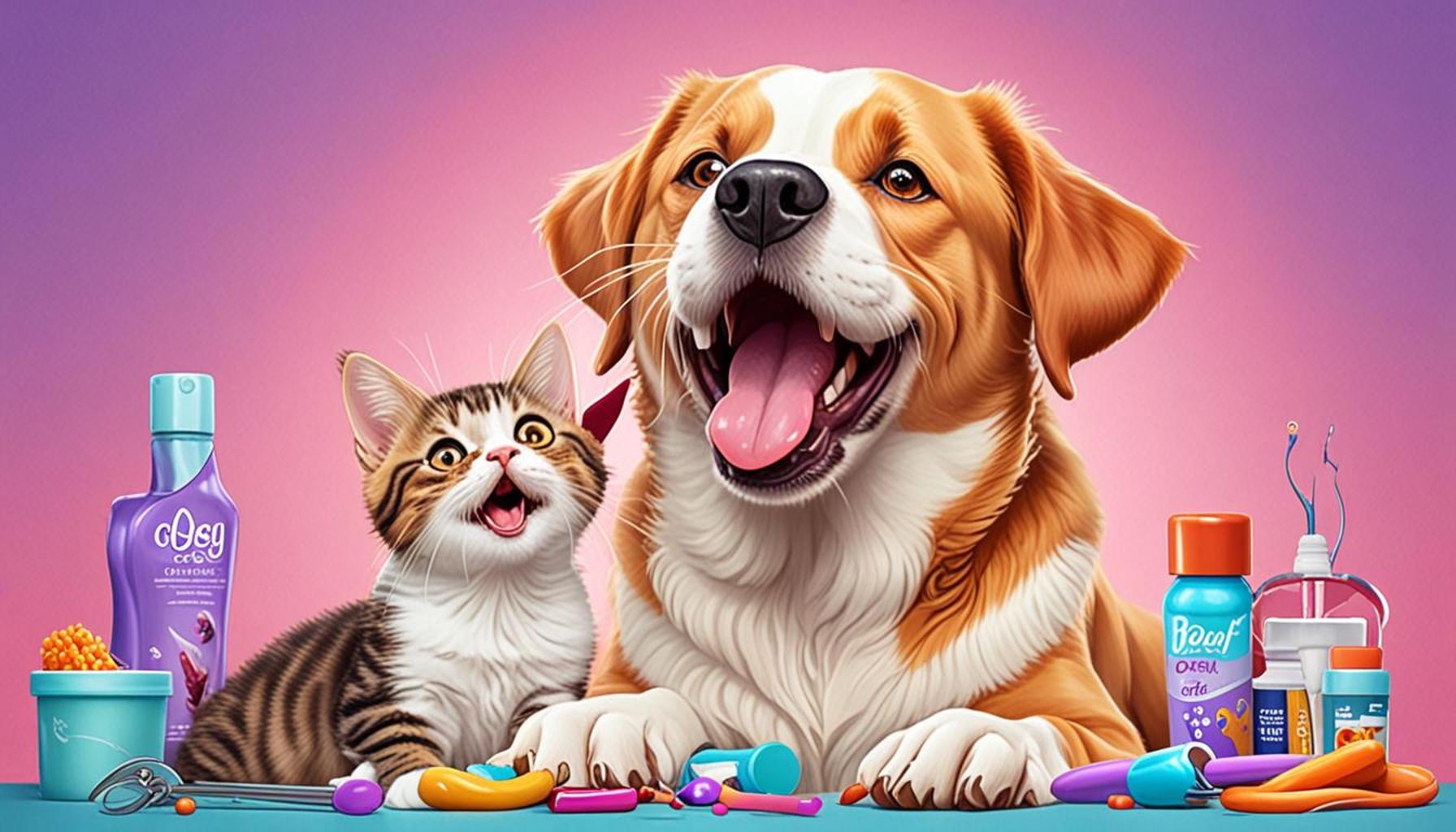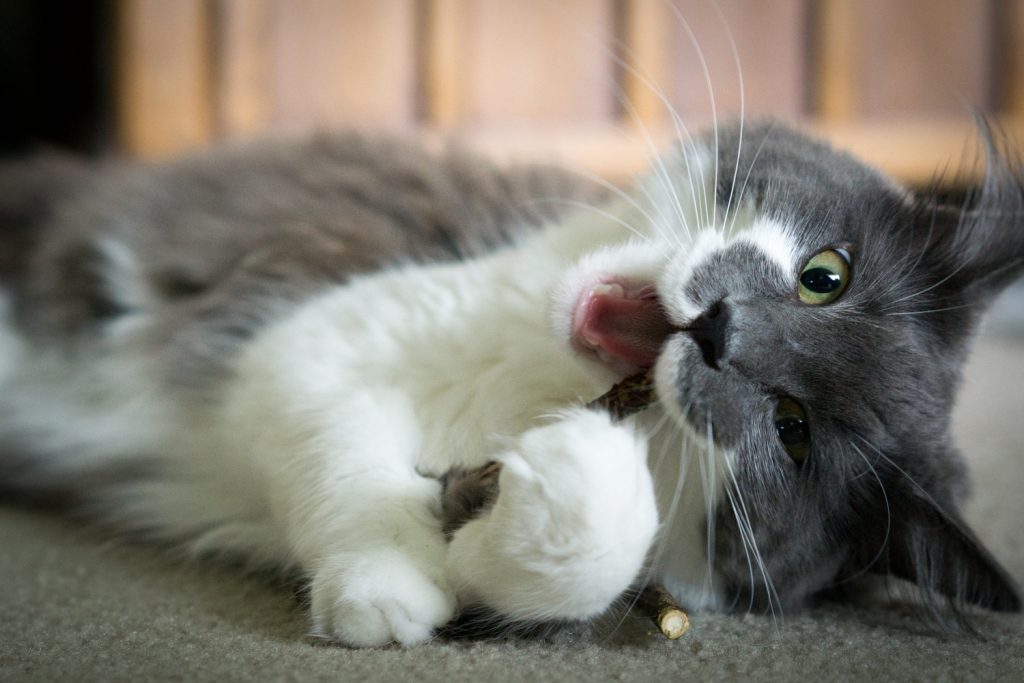The Relationship Between Oral Health and General Health in Dogs and Cats

Understanding the Connection Between Oral Health and Overall Well-being
For pet owners, maintaining their furry companions’ health is a top priority. However, many are unaware of how oral health can significantly impact general health in dogs and cats. This intricate relationship warrants attention, as poor oral hygiene can lead to severe health issues beyond the mouth.
Consider these vital points about the importance of oral health in pets:
- Dental Disease: Up to 80% of dogs and 70% of cats show signs of dental disease by age three. This early onset is alarming, and owners should prioritize dental health just as they would vaccinations or regular check-ups.
- Link to Systemic Diseases: Oral infections can lead to heart, liver, and kidney diseases. Bacteria from periodontal disease can enter the bloodstream, potentially causing inflammation and infections in vital organs, making it essential to manage oral health proactively.
- Behavioral Changes: Pets suffering from oral pain may exhibit changes in behavior, such as irritability or decreased appetite. If your pet seems less playful or is eating less than usual, consider a veterinary dental evaluation—they may be suffering in silence.
Recognizing the signs of dental issues is crucial for early intervention. Common signs include bad breath, difficulty eating, or excessive drooling. Regular dental check-ups and at-home care can enhance both oral health and overall longevity. In fact, many veterinarians recommend brushing your pet’s teeth regularly—ideally daily, but even a few times per week can make a significant difference. Specialty dental treats and toys designed to reduce plaque and tartar can also be beneficial supplements to your pet’s dental hygiene routine.
This relationship between oral health and general health is an essential aspect of pet care that deserves careful consideration. A study published in the Journal of the American Veterinary Medical Association found that pets receiving routine dental care had significantly fewer instances of systemic diseases compared to those who did not. Regular professional cleanings, alongside diligent at-home care, not only combats dental disease but promotes a longer, healthier life for your pet.
As we delve deeper into this topic, we will explore how oral health impacts your pet’s quality of life and what preventive measures can be taken to ensure their well-being. Join us on this informative journey that elucidates the significance of a healthy mouth for a healthy pet. The path to wellness begins with awareness—by understanding the profound effects of oral hygiene on your furry friend, you can take necessary steps to ensure their health and happiness for many years to come.

DISCOVER MORE: Click here to learn about your pet’s hydration needs</p
Exploring the Consequences of Neglected Oral Hygiene
When it comes to the well-being of dogs and cats, oral health is often an overlooked component. Many pet owners may not realize that the mouth serves as a gateway to the rest of the body, making it crucial to prioritize dental care. The reality is stark; neglected oral hygiene can set the stage for numerous health complications that can significantly affect a pet’s quality of life.
One of the most pressing concerns is the prevalence of periodontal disease. This condition, which includes inflammation of the gums and surrounding structures, is not just a dental issue—it poses a serious risk to overall health. In fact, studies indicate that dogs and cats begin showing signs of dental disease by the young age of three. This early onset demands immediate attention from pet owners, who should recognize that bad dental habits can lead to a life of discomfort and health struggles.
The connection between oral health and systemic diseases is particularly alarming. The bacteria from periodontal disease can enter the bloodstream, traveling to vital organs and causing inflammation or even infection. Heart disease, liver problems, and kidney issues are just a few examples of the serious conditions that can arise from untreated dental problems. A study highlighted in the Journal of Veterinary Internal Medicine emphasizes that pets with periodontal disease were significantly more likely to develop these systemic diseases compared to those with healthy oral hygiene.
Moreover, the presence of chronic pain in the mouth can lead to behavioral changes in pets. Pets suffering from dental issues may become withdrawn or exhibit signs of discomfort, such as reduced appetite or increased irritability. This change in behavior could confuse pet owners and lead to misinterpretations of their pet’s condition, thereby delaying necessary veterinary intervention.
- Seek Professional Care: Regular veterinary dental check-ups should be an integral component of your pet’s healthcare plan.
- At-Home Dental Care: Brushing your pet’s teeth regularly can prevent plaque buildup and major dental issues.
- Dental Treats and Toys: Specialized dental products can help maintain oral hygiene in between professional cleanings.
Understanding the impact of oral health on general health is vital for every pet owner. By addressing dental problems proactively, owners can significantly improve their pets’ lives, reducing the risk of further complications and ensuring a longer, happier existence. The synergy between oral hygiene and overall health not only helps to avert painful conditions but also encourages a more vibrant, playful demeanor in pets.
As we further investigate how focusing on dental health can enhance your pet’s well-being, we will lay out specific steps and strategies to make oral care a manageable part of your pet’s routine, ultimately contributing to their lifetime of health and happiness.
The Relationship Between Oral Health and General Health in Dogs and Cats
Ensuring good oral health in dogs and cats is vital for their overall well-being. Many pet owners might overlook the significance of dental hygiene, believing it to be a minor concern. However, research shows that untreated dental issues can lead to serious health problems affecting various systems in the body.
For instance, periodontal disease, a common condition in pets, can cause bacteria to enter the bloodstream, affecting the heart, kidneys, and liver. Regular dental check-ups and cleanings not only help in identifying issues early but also play a role in preventing systemic diseases. Furthermore, maintaining your pet’s oral hygiene can enhance their quality of life by alleviating pain and discomfort associated with dental diseases.
Understanding the connection between oral health and general health can empower pet owners to make informed choices about dental care. This includes providing dental treats, regular tooth brushing, and ensuring routine veterinary visits. By prioritizing their pets’ oral health, owners can contribute to a longer, healthier life.
| Category | Description |
|---|---|
| Periodontal Disease | A serious dental condition that affects gums and can lead to systemic health issues. |
| Bacteria Spread | Bacteria from the mouth can enter the bloodstream, impacting organs like the heart and kidneys. |
By being proactive about oral care, pet owners not only help to prevent dental diseases but also support their pets’ overall health. As awareness grows about the critical link between oral and general health, the importance of routine dental care becomes ever clearer, leading us to ask ourselves: how well are we doing in caring for our pets’ teeth?
LEARN MORE: Click here to discover how age impacts your pet’s health needs
The Impact of Oral Health on Quality of Life
Maintaining strong oral hygiene in dogs and cats is pivotal not only for avoiding dental disease but also for enhancing the quality of life of our furry companions. The condition of a pet’s mouth can directly influence their overall vitality and engagement with their environment. According to recent statistics, over 80% of dogs and 70% of cats exhibit some form of dental disease by the time they reach the age of three, underscoring the urgent need for attention to oral health. Without proper care, pets can experience a cascading effect of health issues that compromise their well-being.
To truly grasp the relationship between oral health and general health, one must consider how dental issues can manifest in other bodily systems. For example, periodontal disease not only causes pain and discomfort but can also lead to sepsis, a life-threatening condition that occurs when the body’s response to infection causes damage to its own tissues and organs. The bacteria associated with periodontal disease can travel beyond the mouth, gripping the heart, lungs, and kidneys, thus activating inflammatory processes that can further diminish overall health.
Another critical aspect is the connection between oral health and nutrition. Pets suffering from dental pain often face challenges when eating, leading to poor nutrition and subsequent weight loss. A well-balanced diet is fundamental for maintaining a sturdy immune system and fostering recovery from other ailments. Owners might notice their pets becoming picky eaters or avoiding food altogether, which can create a vicious cycle of neglect, as poor nutrition makes them more susceptible to other health complications.
Preventive Measures to Enhance Oral Health
Understanding the factors that contribute to oral issues in pets sets the stage for effective preventive care. Regular dental cleanings by a veterinary professional are the gold standard for ensuring that your pet remains free from dental disease. Additionally, investing in at-home care can significantly improve dental outcomes.
- Regular Brushing: It is recommended that you use pet-specific toothpaste and brushes for effective cleaning at home. Start slowly to acclimate your pet to the routine, making it a positive experience with rewards.
- Water Additives: Specialized water additives can assist in controlling plaque while making daily hydration more beneficial for oral health.
- Rawhide Chews and Dental Chews: These can help to reduce tartar buildup through the mechanical action of chewing, though care should be taken to choose products that are safe and appropriate for your pet’s size and chewing behavior.
Pet owners should also remain vigilant for early signs of oral issues: persistent bad breath, swollen gums, or any changes in eating habits. By employing these preventive measures, pet parents can take significant strides toward protecting their pets from serious health implications stemming from poor oral hygiene. This proactive approach pays dividends in the long run, leading to not only healthier pets but also happier, more playful companions as they engage fully in their daily activities.
When educating others about the implications of oral health on pets, it’s essential to disseminate information supported by veterinary studies that correlate significant dental disease with general systemic health issues. Armed with this knowledge, owners can be proactive in establishing a routine that champions oral hygiene and, by extension, elevates their pet’s quality of life.
LEARN MORE: Click here to discover the link between dental health and pet well-being
Conclusion: Strengthening the Bond Between Oral Health and Overall Well-Being
In summary, the intricate relationship between oral health and general health in dogs and cats is clearer than ever. With a staggering percentage of pets facing dental disease by the age of three, pet owners must recognize that the consequences of neglecting oral hygiene extend well beyond bad breath and yellowed teeth. From impacting nutrition to contributing to life-threatening conditions like sepsis, poor oral health is a gateway to a myriad of systemic issues that can compromise the vitality of our beloved companions.
As responsible pet parents, we possess the power to foster healthier lives for our furry friends through consistent preventive measures. Regular dental cleanings, effective at-home care practices, and vigilance for early signs of oral problems are pivotal steps in protecting their overall well-being. The implementation of a comprehensive oral health routine not only enhances dental hygiene but directly enriches quality of life, allowing our pets to thrive and engage fully in their surroundings.
The journey toward understanding and promoting oral health in our pets is an ongoing one, requiring awareness, education, and a proactive approach. As we advance our knowledge in this field, sharing credible information with fellow pet owners can have a ripple effect, leading to healthier futures for countless animals. By prioritizing oral hygiene, we reinforce the deep bond between humans and their pets, ensuring that they enjoy longer, happier, and healthier lives.


